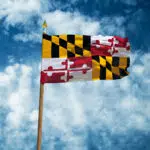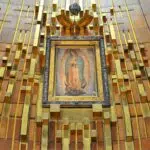Old New Year’s Day was celebrated on March 25 and this tradition is still honored by some countries. Even though the Gregorian calendar was established in 1582, several countries opted to reject it for hundreds of years. Instead, they adopted the “Annunciation Style date,” which considered the Annunciation Feast (March 25) to be New Year’s Day. Dionysius Exiguus introduced the ‘Anno Domini’ calendar and the celebration on the day began in several locations. Because Jesus was to be conceived on the Annunciation, nine months before Christmas Day, Dionysius chose March 25 as the new year.
History of Old New Year's Day
The New Year, while primarily a religious celebration, is steeped in history due to its connection to the invention and adaptation of the Gregorian calendar. There were just 10 months when the early Romans developed their calendar, with March being the first month of the year. The custom of beginning the new year in January dates back over 400 years only!
The New Year was celebrated in Mesopotamia circa 2000 B.C. around the time of the vernal equinox, which occurred around March 25. There were barely 10 months left at the time. The calendar at the time was based on the seasons, and the planting season began in March. As a result, it was chosen as the first month of the year. With March as the first month of the year, it was only natural that the seventh month (September in Latin) be named “septem,” the eighth-month “octo,” the ninth-month “novem,” and the tenth month “decem.”
Rome began celebrating the New Year on the first day of January in the year Numa Pontilius, Rome’s second ruler, added the months of January and February to the calendar around 700 B.C. It was at this time that the newly elected Roman consuls began their one-year term in office, hence it became the start of the year. In 46 B.C., Julius Caesar established the Julian calendar, with January as the first month of the year. It was based on the movements of the sun and was a vast improvement over the Roman lunar calendar that had previously been in use. Later research revealed that the lunar calendar was extremely incorrect.
Old New Year's Day timeline
In Mesopotamia, the new year is celebrated around the time of the vernal equinox, which happens around March 25.
Rome's second ruler, Numa Pontilius, adds the months of January and February to the calendars.
England begins observing New Year's Day on March 25 and continued to do so until 1752, when they decide to embrace the present Gregorian calendar.
Much of Catholic Europe accept the Gregorian calendar in 1582, as it is a command by Pope Gregory XIII.
Old New Year's Day FAQs
Is it true that New Year used to be in March?
Yes, it is true because back then, the 304-day calendar year started in March (Martius), after the Roman god Mars.
Why was the New Year moved from March to January?
Julius Caesar introduced a new, solar-based calendar and decreed that the new year would occur on January 1.
Which country celebrates New Year in March?
Iran observes New Year’s Day on March 21.
Old New Year's Day Activities
Prepare a large meal
Just like New Year’s Day, the best way to celebrate it is by preparing large meals with family, friends, and neighbors. Sharing some traditional food from wherever you are is a good way to do it.
Watch a live music show
Seeing live music is also one of the best ways to celebrate the Old New Year’s Day, just like it was New Year’s Day. What makes an event memorable is live music!
Toast to the New Year
Having some celebratory drinking can greatly add to the festive ambiance. So, raise a glass to celebrate the ‘new year!’
5 Facts About New Year
It first happened 4,000 years ago
The ruler of Rome, Julius Caesar, was the first to designate January 1 as a national holiday.
Making a resolution
New year's resolutions are made by 45% of Americans — top resolutions include: losing weight, becoming organized, spending less and saving more, staying fit and healthy, and quitting smoking.
Different calendar, different new year’s day
The Egyptians, Phoenicians, and Persians began their new year with the fall equinox, and the Greeks celebrated it on the winter solstice.
Open a bottle of champagne
During new year celebrations, Americans consume about 360 million glasses of sparkling wine.
Witness the ball drop
A million people assemble in Times Square in New York City to witness the ball drop, which was created in response to a prohibition on fireworks.
Why We Love Old New Year's Day
Fresh start
The New Year is all about making new beginnings and looking forward with hope. Old New Year's Day can mark the end of one chapter and the start of a new one.
Party time
It's party season — and for party animals, it's a highlight on the calendar. The Old New Year's Day is the second absolute greatest time of the year to get together with your closest friends and family.
Big feast everywhere
Old New Year's Day pulls put together. It gives us another chance to have a large feast with our family and friends.
Old New Year's Day dates
| Year | Date | Day |
|---|---|---|
| 2026 | March 25 | Wednesday |
| 2027 | March 25 | Thursday |
| 2028 | March 25 | Saturday |
| 2029 | March 25 | Sunday |
| 2030 | March 25 | Monday |



























